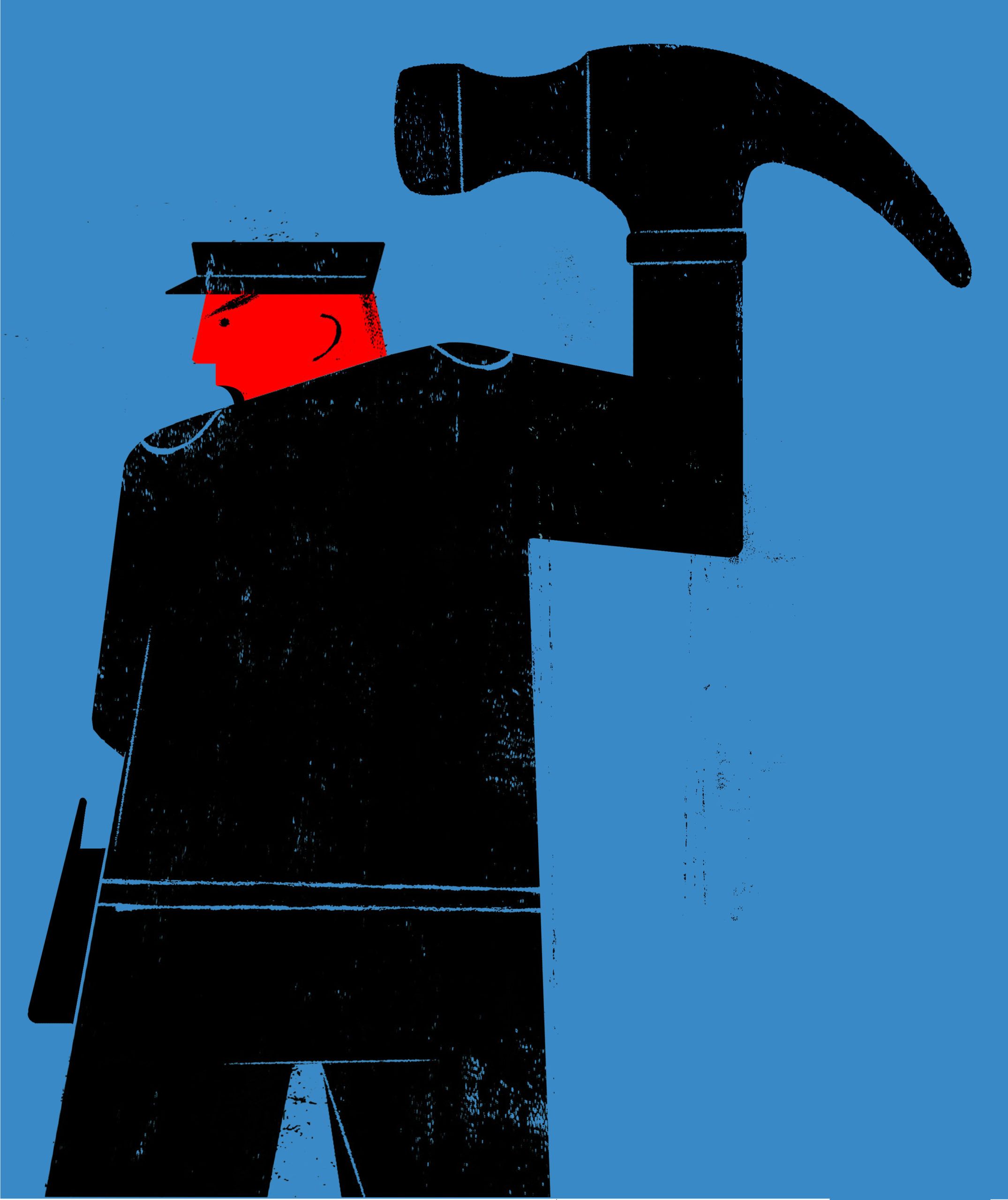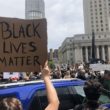Police officers in the United States use deadly force far more often than police in Europe, in many cases 10 to 20 times more often. American police departments also have much shorter initial training periods than European police departments; focus less on “soft skills” such as problem-solving, community relations, and de-escalation; and also require far less formal education for newly hired recruits.
In fact, law enforcement training in the United States tends to stress taking charge of every situation with an immediate show of force, making demands for unquestioned compliance, and relying on arrests and even the use of deadly force to solve encounters with people perceived as being noncompliant. This dramatic difference in police training undoubtedly plays a major role in the lopsided numbers of fatal police shootings and arrests in the United States when compared with those on the other side of the Atlantic. These grim statistics can no longer be accepted as the normal cost of doing business for American law enforcement agencies.
According to the Council on Foreign Relations, “The U.S. approach to policing differs from those of other advanced democracies, in areas including organization, funding, training, relations with minority communities, use of force, and accountability.” The short training requirements of American police departments make it difficult to cover more than just the basic fundamentals of police work needed to function on the streets. More complex and, many observers say, critical topics, such as dealing with mentally challenged individuals and people suffering from substance abuse are not adequately taught in the vast majority of American police academies, if they are taught at all. There is just no time.
I served as a police officer, a street cop, with the Yuma, Arizona, Police Department from 1982 to 1987. I attended the Arizona Law Enforcement Training Academy in Tucson, where I received my initial 400 hours of law enforcement training and state peace officer certification. Although the training was rigorous, the courses in-depth, and the instructors excellent, the total training I received only amounted to 10 weeks of academy instruction before I was released to my law enforcement agency for assignment and follow-on training in department-specific policies and procedures.
At the time, I believed my police academy training was first-rate and more than sufficient. It did, in fact, prepare me for most of the routine situations I would later encounter on the job. However, I soon learned that I was only taught one way of dealing with aggressive or uncooperative people on the street: employ immediate threats of violence and overwhelming force, including deadly force if necessary for noncompliance. To be sure, my instructors did suggest that we try to de-escalate the situation if possible but not to hesitate to take charge and even to “draw down” on the subject (point your weapon) if need be. In conversations I have had with many police officers over the years, I’ve learned that my academy training on responding to uncooperative people was virtually the same training given to officers everywhere.
Initial law enforcement training for American police officers in the more than 18,000 police departments in the country ranges from as little as eight weeks at a police academy for newly hired officers in Mississippi to six months for basic law enforcement education for new recruits of the Los Angeles and New York Police Departments.
The second and perhaps most important difference between European and American police agencies is in the focus of both the training received by new police officers and their jobs once they complete their training and join their respective agencies. In America, virtually all police departments stress a “take charge and dominate the situation” attitude that is taught and routinely reinforced from the first day a recruit arrives at the police academy. This is in stark contrast to the European focus on de-escalation and community-building. I can personally attest to being told to “kick ass and take names” at several points during my initial police training, both while attending the police academy and afterward, while a probationary officer. The phrase “we own the streets” was also drilled into my head during my academy training. That sentiment often sets the stage for an “us against them” philosophy that only seems to harden as police officers gain more experience.
An American police officer is expected to project an aura of strength and of being in total control of their assigned beat while on patrol. Total obedience to an officer’s commands is required of the public. When that demand for total obedience is threatened or challenged, arrests and use of force, sometimes deadly force, are authorized. This officially sanctioned use of deadly force has reached unprecedented and even criminal levels of violent police behavior in the past several years.
In large urban areas like Los Angeles, for example, some police units have taken that demand for total obedience to an extreme. There are deputies and units within the Los Angeles Sheriff’s Office that operate just like the criminal gangs they are sworn to protect the citizens against, with officers behaving like gang warlords, demanding strict obedience and employing “executioners,” including fellow deputies, when their “subjects” do not toe the line.
I believe that the emergence of criminal police gangs is very possibly an unintended and disturbing outgrowth of several factors prevalent in police departments throughout the United States, including: an institutionally sanctioned attitude of “take charge of the situation at all costs” (including the use of lethal force); poor background vetting of new officers (including violent and racist social media posts); loosening recruitment standards (waiving minor crimes and drug use, allowing violent and racist tattoos, etc.); and insufficient training of new police officers, including little to no training in critical areas involving de-escalation and dealing with the mentally ill and substance abusers.
Those factors are a perfect recipe not only for producing chronic disciplinary problems among individual officers but also for allowing large-scale criminal activity to flourish by the very officers hired to protect the American public from just such activities. New York City, Chicago, Baltimore, and other large urban areas in the United States have also experienced recent incidents of rogue police gangs and individual officers involved in committing serious crimes, often involving firearms, resulting in serious injuries and death.
Although the national population of African Americans is around 13 percent and has held steady at that figure for many years, Black people account for about 24 percent of all fatal police shootings in the United States and are killed by police at a rate that is almost 2.5 times higher than police shooting fatalities involving white victims. It is not difficult to appreciate the level of distrust that many African Americans have for the police, and why the Black Lives Matter movement has found such traction in light of the increasing number of videotaped killings of Black men by (usually white) police officers in the United States. I would be less than truthful if I said that I had not personally observed situations where a double standard applied when police dealt with a call involving a Black suspect versus a white suspect. I believe that if they were also being truthful, most white police officers would admit to the same thing.
The values in Europe governing the use of lethal force by the police are different in the extreme. In the United States, police officers can use deadly force if they “reasonably perceive imminent threat and grave harm.” The difference in the attitudes of the American and European police cultures is evidenced in an important phrase contained in the European Convention on Human Rights. That foundational document states that police can only use deadly force when “absolutely necessary.” The European law enforcement agencies and nations subject to that convention take that phrase and its meaning very seriously.
To prevent situations where the use of deadly force might become “absolutely necessary,” the institutions responsible for training newly hired police officers in Europe make a concerted effort to stress the use of nonlethal methods in dealing with potentially violent situations, including dealing with people who are intoxicated, mentally ill, suicidal, violent, armed, and posing other life-and-death situations. They not only stress nonlethal solutions, they provide the officer trainees with sufficient blocks of training in nonlethal methods of problem-solving so the officers do not usually even consider drawing their weapons in such situations.
By comparison with American police training, initial law enforcement education in Europe is much longer. For example, initial police training lasts two years for recruits in Austria and two and a half years in Germany. In Finland and Norway, prior to becoming sworn police officers, trainees must first complete a bachelor’s degree while simultaneously doing an internship with a police department. This training is significantly longer and more comprehensive than that given to any American police officers.
Although all European police training involves substantial practice and qualification with firearms, as stated earlier, law enforcement training also integrates a large block of defensive tactics not involving the use of deadly force, i.e., nonlethal defensive tactics. For example, “By law, police officers in Germany are required to receive two hours of defensive tactics instruction every week while they participate in basic training.” That training involves various forms of the martial arts, such as jujitsu, judo, and kung fu. Spread out over the required two-and-a-half-year curriculum, that amounts to hundreds of hours of training in the use of nonlethal force, leading to a formidable amount of training in defensive tactics not requiring the use of a firearm. With this extensive emphasis on defensive tactics and the confidence-building that results, police in Europe are able to deal more often with potentially life-threatening situations without resorting to the use of lethal force—situations that, in the American context, often end up with the use of a firearm.
Our country is going through a deep soul-searching, as perhaps never before, on issues of police abuse and systemic racism. Many Americans who never gave any thought to the concept of police violence or the unjust treatment of Blacks by law enforcement have been forced to confront these realities. The sheer number of police encounters ending in death or serious injury to the public, in particular to African Americans and other people of color, cries out for fundamental reforms—we need to fix our system of pre-employment vetting, increase basic educational requirements, and require both a substantial increase in the length of law enforcement training and a drastic overhaul of its curriculum.
I have read many statements from across the country calling for “defunding the police,” and I have also read (although to a lesser degree) calls to “abolish the police.” I realize that both the calls for defunding the police and abolishing the police come from a place of acute pain and are usually meant more as a call to drastically reorder the priorities for the budgeting of police departments, to draft new policies and procedures for police behavior, and to implement new and transparent disciplinary procedures. I understand these demands and mostly agree.
However, to this writer, it’s important that we as a nation do not react to the tragic cases of intolerable police violence with poorly conceived plans for both taking a scalpel to police budgets and restructuring police departments from the ground up. Neither is a simple task. Abolishing a given police department entirely can have catastrophic consequences, and I hope all jurisdictions contemplating such a move will thoroughly review the long-term consequences for public safety beforehand. When a well-intentioned small-scale version of abolishing police presence was attempted for only a few blocks in downtown Seattle last summer during the George Floyd ri0ts—the creation of the so-called “Capitol Hill” district—chaos ensued, along with two murders and several serious assaults. It was soon dismantled.
A community cannot function without a working police department; to do so would place the lives of everyone in the community at risk. Social workers, psychologists, and drug rehabilitation counselors are not trained, nor do they have the legal authority, to confront an armed assailant, a gang fight, a burglary or bank robbery in progress, or any number of other serious and potentially violent law enforcement situations. As much as well-meaning critics of the police and other thoughtful individuals would like to think that there is a quick fix and a viable alternative to police misconduct by doing away with most police officers and replacing them with human service workers and community activists, in reality that would result in placing the human services workers, community activists, and victims of crime in unnecessary danger. That is not the answer.
The answer to unacceptable levels of police violence and misconduct, officer-involved shooting fatalities, systemic police racism, and criminal activities of all kinds committed by the police is to hire better-educated police officers who have no criminal convictions; no history of untreated substance abuse; no violent behavior of any kind; no chronic credit problems, dishonorable military discharge or evidence of racial, ethnic, gender, or religious hatred.
It’s also now essential that we identify potential white supremacist police recruits and root out current police officers with affiliations to white supremacist and other violent, radical anti-government groups, including militias. Police recruits should be required to have a minimum of a four-year college degree. Police academies must substantially increase their course length to at least one year and add blocks of training on nonlethal tactics, de-escalation, dealing with substance abusers and the mentally ill, community policing, race relations, anger management, stress reduction, availability of social services for victims, and more. The use of lethal force must truly be taught as a last alternative. Most importantly, the “us versus them” attitude must become: “We are all in this together.”
Rewriting police department policies to require that community services workers respond to nonviolent calls for services that can reasonably be handled by professionals other than police officers would also be a huge step in decreasing violent encounters with the police and would build trust between the community and its police department. Every call for service does not have to have a sworn police officer respond. In fact, having a police officer respond to certain calls for service can, and often does, make the situation worse. A social worker, drug rehabilitation counselor, or housing specialist might be far more appropriate. Familiarizing themselves with the curriculum of a representative European police academy would give American law enforcement agencies all the examples necessary to revamp their own training curriculum to better meet the needs of their community. It can be just that simple.
I want to close by briefly mentioning a critical issue that, unless addressed on a national level, will inhibit the effectiveness of all the recommendations I have just cited. That is the issue of the American gun culture. One of the main reasons European police officers are able to use nonlethal force and feel confident in their ability to control situations is the fact that the officer can be almost certain that even the most violent, noncompliant subject will be unarmed. That one fact gives the officer a huge psychological (and physical) edge in such encounters and substantially lowers the chances of a fatality.
That same scenario in America is altered simply because of the prevalence of weapons the officer might encounter on any given day. We live in a country where the public is fiercely protective of the right to bear arms, to the point where many now feel justified in shooting a police officer to defend that right. Recent incidents where several heavily armed militias stormed state capitols to voice their displeasure with mask mandates during the coronavirus pandemic illustrate the potential for deadly encounters that American police officers must deal with every day.
All the police recruitment vetting, training, and policy rewriting will struggle with the task of emulating the European example and lowering the number of police involved in shooting fatalities until the out-of-control gun culture in this nation is addressed by both lawmakers and the American public. That is also a goal we must address in earnest.
David DeBatto is a retired U.S. Army counterintelligence special agent and Iraq War veteran and former police officer. He is an author, analyst, and consultant.





Even the author admits that little of his proposals could be enacted as long as the “gun culture” means that criminal suspects could be armed. But when nothing substantial in controlling that culture occurred after the murder of 20 first graders in Connecticut – 6 and 7 year old children – I see an uphill battle. And in the current climate where too many white people feel they must be armed against chaos unleashed by unending demonstrations, reducing the legal and illegal gun totals will be a gargantuan task.